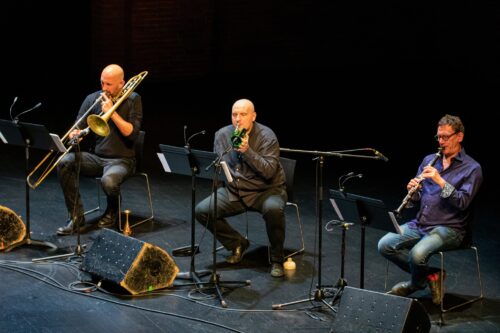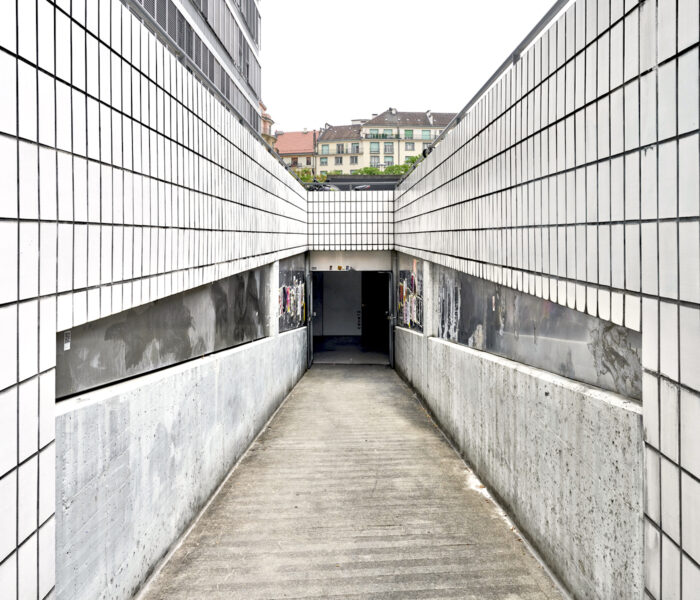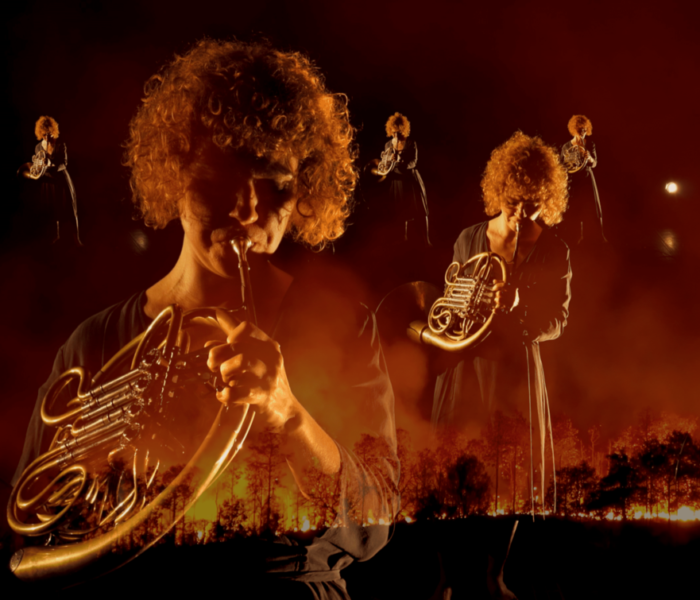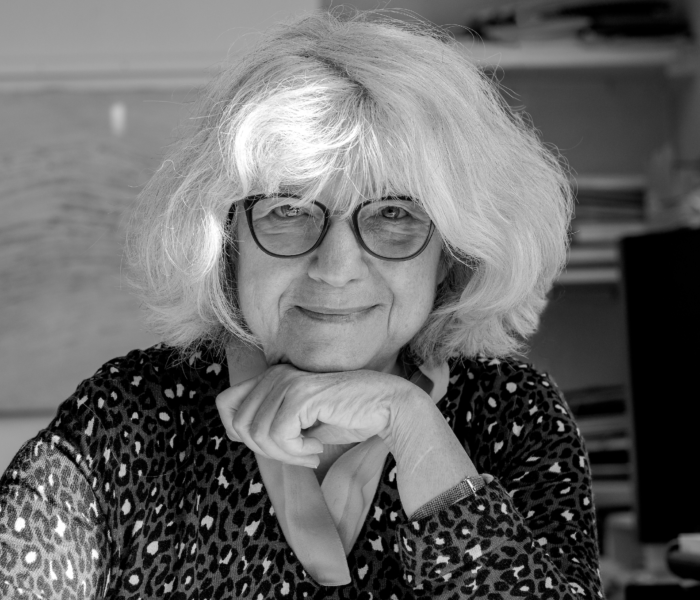As part of GMEA's riverrun festival in Albi, Kasper T. Toeplitz gives us the keys to the creation of Lou Reed's Metal Machine Music on the occasion of Zeitkratzer's concert at Toulouse's Théâtre Garonne on October 3.
Trying to define what could be the greatest musical revolution of the 21st century - although it's far from over, but especially despite the fact that playing this game is always a bit futile - it's very possible that it's a change in the practice of "traditional" instruments, those we continue to call the "real" instruments: all those recorded in orchestration manuals, and for which pages and pages of studies are written where there are no progressive virtuosity studies for lap-top or DIY (do-it-yourself) hacking of electronic toys - although there is a kind of Bible for this, the book "Handmade Electronic Music: The art of Hardware Hacking" by Nicolas Collins.
It may seem odd to talk of progress in music - or even revolution - driven by instrumental practice, by the way in which today's instrumentalists and composers draw their inspiration from "electronic-like" sounds played on acoustic instruments, whereas in the last century, composer Olivier Messiaen asserted that the most important change for twentieth-century composers was electronic music - including, and even especially, he pointed out, for those who didn't practice it - and he himself wrote very little electronic music, mainly for the Ondes Martenot, an instrument for which the old values or definitions of what constitutes music (pitch, duration) are still operative, whereas the instrumental revolution underway redefines the notion of what is played, turning the instrument into a sound generator largely inspired by "electronic sounds", shifts the focus of technical work away from classical virtuosity and towards knowledge of its less obvious possibilities, enabling the instrument to take its place as "simply" an instrument, a tool that makes it possible to materialize music in the broadest sense, not just music conceived for a given instrument.
In fact, the approach of applying "electronic thinking" to the handling of traditional instruments is not exactly new; already in the 1970s there was a plethora of publications and research into "other" uses of traditional instruments, for example how to play multiphonic sounds, i.e. chords of sorts, on wind instruments such as flute, saxophone, clarinet or bassoon, which are essentially monophonic or melodic instruments. Even earlier, since the 60s, many composers have written for instrumental ensembles sounds from an electronic imaginary, such as the enormous sliding clusters produced by an orchestra of 52 string instruments composed by Krzysztof Penderecki in his Thrène à la mémoire des victimes d'Hiroshima in 1959, the micropolyphony developed for orchestra by György Ligeti in 1961 for Atmosphèresor Christian Wolff's "coordinating scores" such as his For 1, 2, or 3 people from 1964, which already prefigured "computer music" by noting not the pitches and durations of the notes to be played, but the interactions between the musicians, almost like an electronic circuit diagram.
However, it's a safe bet that it's not so much the experimentation of over half a century ago that has changed the practices and sound research of today's musicians and instrumentalists, but that this change comes from their openness to other types of music, to all kinds of music, one might say, placing them on an equal footing, as opposed to the conservative attitude of speaking of "learned music" and "other" practices, differentiating them by the degree of calibrated virtuosity required for both performance and composition. And while there will undoubtedly long be those of the old school lamenting the fact that today, mastery of counterpoint has been replaced by mastery of rubbing a stiff bristle brush on the skin of a bass drum, the change in thinking about music - what it is, how to conceive it and how to practice it - is changing it radically.
And if there's one ensemble that can lay claim to this shift in thinking, to a circulation between supposedly "opposing" musics, navigating between Stockhausen, James Tenney, Xenakis, John Cage and Merzbow, Whitehouse, Sonic Youth or today's "unclassifiable" composers like Dror Feiler or Zbigniew Karkowski, it's indeed Zeitkratzerformed in 1997 under the direction of Reinhold Friedl. From the outset, the ten-strong ensemble, mostly classically trained and playing acoustic but amplified instruments (with the exception of the occasional addition of electric guitar), has offered a repertoire ranging from "twentieth-century classics" to compositions and transcriptions by contemporary musicians from other, less academic spheres. And it's saxophonist Ulrich Krieger, who is not only a classically trained musician, perfectly at ease with the contemporary repertoire, but also a player in new music, whether improvised, research or electronic, who will propose a transcription of Lou Reed's legendary Metal Machine Music , an idea he'd had ever since he heard the record, released in 1975.


When Lou Reed finally, and after much prevarication, accepted the idea and gave the go-ahead for the transcription of the piece, Ulrich Krieger and Luca Venitucci (who played accordion in Zeitkratzer), completed the work in just a few weeks in 2002, after which the two musicians met in Berlin to compare their work and draw up the final score. The result, as played by the ensemble and recorded twice (on Asphodel Records, then Zeitkratzer Productions), is quite astonishing. Astonishing for the timbral similarity with the original Metal Machine Music, while the emblematic instrument of the whole project, the electric guitar, is absent.
Because Metal Machine Music is initially about (electric) guitars - but also about their absence, since listening to the original double LP you can't distinguish the presence of guitars in the album, only electronic sound, and the album cover states
METAL MACHINE MUSIC AN ELECTRONIC INSTRUMENTAL COMPOSITION *THE AMINE ß RING
before specifying
No Synthesisers
No Arp
No Instruments?
And further on:
No panning
No phasing
No
A "no" opposed to the classic rock instrumentarium, guitar-bass-drums, and above all to its primary expression: the voice, and hence the song. But also to the recurring idea in the history of rock: the battle between instrumental virtuosity, the technical mastery of an instrument, and the emptiness of this idea, opposed by notions of truth and urgency (and let's not forget that 1977 was the year of the birth of punk, partly in reaction to "progressive" rock and its excesses of virtuosity).
Yet this idea of "machine" (and its assertion of No Instruments - embellished with the question mark) is merely fantasized - Metal Machine Music is an album of guitars, not machines, more precisely electric guitars. Guitar in the broadest sense, meaning not only the stringed instrument but also all its peripherals, Marshall and Fender amps, effects and even further, in concentric circles, the studio equipment: headphones and speakers, recorders and microphones. The essence of this music is the love of the electric guitar and its most famous corollary: feedback. Guitars, specially tuned, placed against amplifiers, as if playing themselves: the sound emitted by the amp excites the strings, whose vibrations create the sound the amp emits. Another guitar, with its own amp, and a different tuning. And yet another. A stack of guitar feedbacks, whose resonances blend together, each parasitizing the other a little, taking it into another territory, creating a common mass.
Metal Machine Music hides the origin of its sound paste - the No Instruments? of the liner notes - and doesn't let you hear the guitars; the subtitle of the piece, "An Electronic Instrumental Composition", suggests instruments, but surely this instrumental precision is more of a warning: there are no songs here, this is not a continuation of Walk on the wild side and its "too toodo toodo". Only guitars, but camouflaged - to perceive them clearly, it's best to listen to the album at half-speed. As for "composition", it seems that at the time of the double LP's release, the question didn't seem very serious: although there were rumours that the record should have appeared in RCA's "classic" collection (Red Seal), these are largely unverifiable today and seem more like a kind of urban legend; it's only Zeitkratzer's work and positioning that establishes this heap of sound as a "composition", a piece to be replayed again and again, outside the machine (noise, sound) that generated it, but which in some way enabled the reinvention of instruments and thus, half a century later, justifies No Instruments?
Festival riverrun, concert October 3, 8pm at Théâtre Garonne, Toulouse



)



